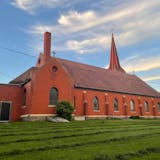The sun was setting on my last day in Paris. This was not a good time to find a new neighborhood full of places to explore. How had I not seen all these adorable streets, all this architecture, these Metropolis-sized banks beside dust-covered rare-stamp shops, and never even heard of this St. Georges neighborhood in the two dozen times I'd been to this city?
Travel is about exploring — it's a time to stretch your comfort zone, tap into potential you may never have known you possessed. Usually this means "Go on, get off the beach, shake up your worldview, get a passport." But what do I do but go to the same place (Paris) every year for vacation?
For me, going someplace I know is a break from my normal way of traveling. But going back to a place you already know gives you the luxury of stumbling around. With the must-see items checked off and the lay of the land already scoped out, you can explore with less distraction.
It also allows for you to follow your own particular interests — museum overdosing, say, or looking for 18th-century espresso cups — and the freedom to explore in whatever style suits you. Wake up at sunrise and attack like Patton, or sit at a cafe and watch people all day.
I was thinking about the best ways to approach a place a second (or third) time and came up with a few surefire, productive methods.
Find a theme
I found the St. Georges neighborhood on a DIY walking tour I'd assigned myself for a story. The story would be in conjunction with an exhibit at the Philadelphia Museum of Art, featuring Impressionist art related to art dealer Paul Durand-Ruel, kind of a patron saint for Monet, Manet, Degas and others before they were even called Impressionists.
I mapped out significant places in the life and career of Durand-Ruel and his contemporaries, including the starving artists. I got off at the metro station at Pigalle, not an area I like in the least.
But soon my mood changed as I followed the maps away from what I remembered and down unfamiliar streets. This was an area once called "Nouvelle-Athenes," where the intellectual and artistic elite lived, building homes in classic Greek style. It has few big tourist attractions, making it a truly Parisian quartier.



